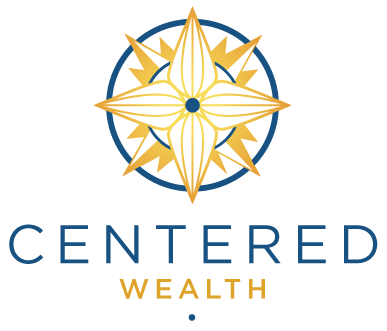ROADMAP FOR CONSCIOUS INVESTING
Part 4: Fulfillment of the Triple Bottom Line: Socially Responsible Investing and the Centered Wealth Tree
The Triple Bottom Line economic model accounts for the natural capital provided by ecological systems and their contribution to maintaining life on earth.
Consumers and investors are coming to realize that an investment in the marketplace is a creative act, an empowering vote for the kind of world you want to live in.
Evolution of Business and the Economy
When the first European ships arrived on the shores of the “New World” the first impression voiced by the sailors was delight over the unlimited amount of straight virgin timber for use as masts in the sailing vessels of the time. Britain had all but exhausted its forest reserves for mast timber and the New World promised a seemingly unlimited supply ready for the taking. The economy in the land of plenty rewarded those who were best able to extract the vast wealth of natural resources. The consequences for poor stewardship were relatively minor as there was always more to draw from if you fouled your own nest or had used up the existing supply. The values held by these early pioneers eventually evolved their way through the political economy, creating an economic model that assumes ever-expanding consumption based on the exploitation of apparently unlimited natural resources.
Now fast forward to the 21st Century, here in the USA we are witnessing a widening wealth gap between the haves and have-nots and a trail of environmental degradation of our planet’s natural capital coupled with the existential threat of climate change. Not surprisingly, we are also seeing a breakdown in the US political process as the stresses sourced from the environmental crises make themselves felt at the political level.
According to Lester Brown's book, World on the Edge: How to Prevent Environmental and Economic Collapse (Brown 2011), every ecological system that supports industry and the global economy is in decline. While there can be no doubt that the developed world's standard of living has soared during this period, what is also clear is that these gains have been made at great cost to the environment and resulted in an extreme global economic disparity. Further, it’s unlikely that the underlying ecological systems fueling that growth can be sustained for yet another round as developing countries move to improve their own standards of living. “Business as usual” for both developing and developed nations is simply not sustainable and a new model for business and the economy is an imperative. Investors in companies that assume the status quo and ignore this changing economic landscape do so at their own peril.
Business and Commerce: A New Model for a New Economy
We humans, being a highly adaptive lot, are addressing these consequences by evolving new values systems. These in turn are creating the foundation of new economic models that more resiliently manage human and natural resources. The emerging new model for business and commerce has come to be known as investing for the Triple Bottom Line: People (social equity), Profit (rate of return) and Planet (environmental restoration). The Triple Bottom Line is measured in the marketplace through Environmental, Social & COrporate Governance (ESG) reporting. The traditional single bottom line model exploited the environment, considering it a wholly owned subsidiary of business, extracting natural resources with little regard for sustainability, efficiency or social equity. Success under the old model is narrowly defined in terms of rate of financial return on monetary capital. The new Triple Bottom Line economic model still places high importance on profit while also optimizing for restoration of the natural capital provided by planetary ecological systems and the impact the business has on social wellbeing. This Triple Bottom Line approach, supported by ESG reporting, is rooted in the reality that business is dependent upon and nested within ecological and social systems. The companies that embrace this directive of the new economy see the inevitability of adapting to this new hierarchy. They are building manufacturing models along with business and human resource practices that seek to harmonize with, and restore natural systems.
Implementing the Triple Bottom Line
Many examples of companies using ESG reporting and pursuing the Triple Bottom Line model exist. One such example, based in Atlanta, is the world's largest commercial carpet manufacturer. The CEO reinvented the company’s business model from selling carpet to leasing floor covering services. They also reengineered their product line using a new material that is more attractive, requires 97% less raw material input, is cheaper to produce, and is completely recyclable. Investors seeking to capitalize on this sustainability trend should pay attention to companies like this, particularly to management teams who understand the huge potential for taking advantage of the inefficiencies within their industry and who are redefining business objectives and building value across the Triple Bottom Line. (For more examples of companies that are leaders in this model see the references at the end of this article.)
Time will tell which companies survive and which fail in this transition into the new economy. One constant that can be counted on is change, the pace of which is likely to pick up in direct proportion to the crisis levels experienced at the ecological level. Within every crisis, however, is the seed of opportunity. As always, it will be the creative innovators who most readily capitalize on the needs of the time that will survive.
References
• Embedded Sustainability: The Next Big Competitive Advantage, by Chris Lazlo & Nadya Zhexembayeva. Stanford Business Books, Copyright 2011.
• Green to Gold: How smart companies use environmental strategy to innovate, create value and build competitive advantage, by Daniel C. Esty and Andrew Winston. Wiley, 2009.
• Natural Capitalism: Creating the next industrial revolution, by Amory Lovins, L. HunterLovinsand Paul Hawken. Little Brown Copyright 1999.
Disclosure:
Nothing in this article series is to be construed as a recommendation to buy or sell any security or class of securities. Such a recommendation can only be made after personal consultation. Past performance is not necessarily an indicator of future results.
Securities offered through Vanderbilt Securities, LLC . Member: FINRA, SIPC.
Registered with MSRB
Advisory Services offered through Vanderbilt Advisory Services, LLC
Insurance Services offered through Vanderbilt Insurance and other agencies
Clearing Agent: National Financial Services, LLC
Supervising Home Office: 125 Froehlich Farm Blvd, Woodbury, NY 11797 . 631-845-5100
This is not an offer to buy or sell securities. Such an offer can only be made by prospectus. Please check all information before making an investment.



